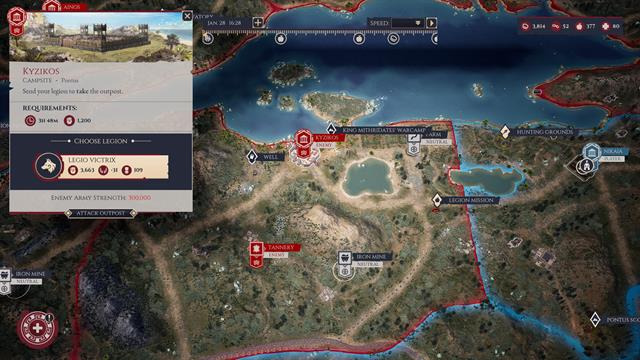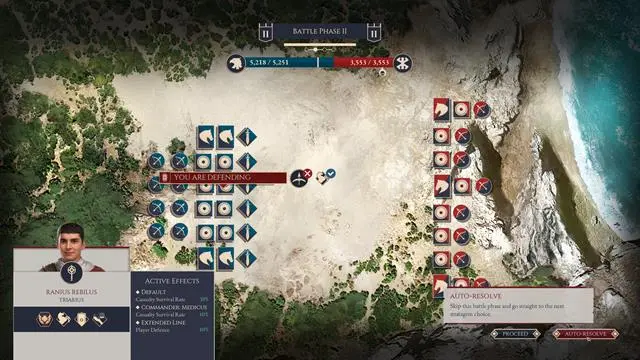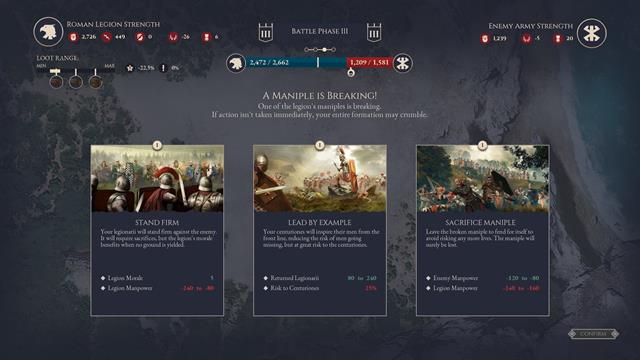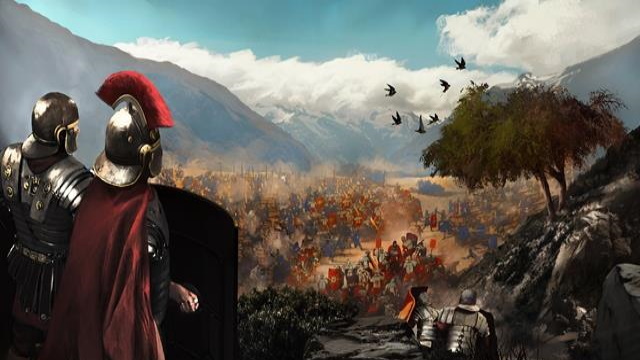Expeditions: Rome Legion Conquests and various strategems are important for taking land away from your enemies. Why keep yourself confined to one corner of the world when you can take over new lands?
Though it’s a large part of Expeditions: Rome, leading your army isn’t exactly as straightforward as moving from one territory to another. This guide will tell you what you need to know about Legion Conquests, as well a how strategems work.
Expeditions: Rome Map Features and Icons Explained
Since there are a lot of mechanics to discuss, we suggest you also take a peek at our other Expeditions: Rome guides regarding Praetorian/Centurion recruitment and perks, Outpost buildings and upgrades, and Pacification missions.
For this particular Expeditions: Rome guide, we’ll look at the facets related to conquering the world map and various points of interest as you lead Legio VI Victrix. Here’s the gist regarding points of interest, infrastructure, and other landmarks when it comes to Legion Conquest:
- Each campaign act in Expeditions: Rome takes place in a specific region (Act 1 in Asia Minor, Act 2 in North Africa, and so on).
- Regions are subdivided into sectors. For the most part, you’re required to control these territories to advance further in the main quest.
- Controlling a sector requires you to attack the main settlement, leading to a battle (more on this concept below). There are also moments when you have to finish a Pacification mission.
- An exception to the rule is a main settlement that’s part of a quest. For instance, Act 1 in Asia Minor sees Kyzikos besieged by Mithradates VI. There are 300,000 soldiers there, which means it’s impossible to assault.
- A sector that’s fully pacified lets you capture the infrastructure and landmarks therein if they are neutral. You’ll send your Legion to that location, but you must remain mindful of required resources like denarii and slaves, as well as the minimum Legion manpower that’s needed to undertake that task.
- If infrastructure is in the hands of a hostile force, then another conquest battle will occur.

Upon capturing infrastructure like Farms, Tanneries, Lumber Mills, and Iron Mines, you’ll obtain tools that are used to unlock Legion outpost upgrades. Here are some examples:
- Iron Mine: 1,200 soldiers and 25 slaves
- Farm: 1,200 soldiers, 50 denarii, and 15 slaves
- Lumber Mill: 1,200 soldiers, 50 denarii, and 25 slaves
- Tannery: 1,200 soldiers, 50 denarii, and 25 slaves
- Quarry: 1,200 soldiers, 75 denarii, and 10 slaves. Quarries don’t add anything to your outpost’s resource pool. Their capture will automatically construct roads in a sector to speed up movement. As such, Quarries shouldn’t be prioritized.
Apart from infrastructure, these are the other interactable features on the Expeditions: Rome map and what their icons mean:
- Legion Mission — Repeatable missions that allow you to send your Legion. You’ll obtain denarii, slaves, or medicine.
- Hunting Grounds — These can be ransacked by your legions to obtain rations.
- Observatory — Your party can move to this spot on the world map to reveal caches.
- Caches — Objects like crates and carts. Moving near them nets you rewards such as weapons, denarii, crafting blueprints, and raw materials.
- Wells — Water is automatically replenished when you return to your base in a sector/where your Legion is garrisoned. But, if that’s too far away, you’ll need to find wells or your characters might die of thirst.
- Transitions — These are larger settlements that your party can visit. These are usually part of main quests or sidequests.
- Random Events — Naturally, further exploration exposes you to various random events that can reveal important items or wreak havoc on your party.
- Timeline Speed and No Limits — Don’t forget to check the timeline at the top of the screen. You may also increase it up to 3x speed, as well as press the Play button or press the spacebar to advance time without moving with your party. Likewise, remember that there’s no time limit per act or region. As such, you’re free to explore to your heart’s content. Just be mindful of your rations/water, as well as possible random events.

Legion Conquests, Strategems, and Defeating Enemy Armies
Expeditions: Rome Legion Conquest battles are triggered once your Legion advances to a settlement or piece of infrastructure held by a hostile force. Ideally, you’ll want your army to have higher manpower, morale, and experience.
The initial battle screen allows you to choose your army’s leader; these are the four Centurions that you’ve recruited in your outpost. Check their variables, perks, etc., as well as the possibility of injury and chance of success before engaging.

After this section, you’ll see a tactical map depicting a battle between the two opposing armies. These encounters have four phases, and you can safely skip the animation to speed things up:
- Formation — This is how you begin the battle. This is usually where you’ll have some decent bonuses.
- Engagement — The initial clash of the forces.
- Complications — The possibility of the enemies having the upper hand, quick reversals, tricky actions, or flanking maneuvers.
- Resolution — This is how you conclude the battle and decide how to finish off the enemy force.

Every Legion Conquest battle phase also has its own set of Strategems. The Strategems in Expeditions: Rome are three cards drawn randomly. You pick an option that is most advantageous to you, though not all will be. These Strategems are what plas out during the clash.
Centurion Specialization perks (infantry, cavalry, logistics, and the like) improve the boosts to related Strategems. Meanwhile, the Medicus perk helps with your army’s casualty replenishment.
Lastly, the Reckless and Cautious perks buff attack and defense respectively, but you’ll incur penalties to their counterpart.

The Best Legion Conquest Strategems in Expeditions: Rome
As a rule of thumb, the best Legion Conquest Strategems in Expeditions: Rome are those that confer significant bonuses to your army with no expected downsides.
For instance, Complications: Maniple Swap adds 50% casualty survival rate, while Resolution: Tend to Your Wounded recovers 80 to 160 legionarii. Resolution: Celebrate is also decent since it adds +10 morale. Moreover, Resolution: Give Chase reduces enemy manpower by 200 to 500 soldiers.
Compare these to options like Complications: Reinforce, which gives +20% player defense but reduces morale by -10, as well as Resolution: Scorched Earth, which increases post-battle loot at the cost of morale and missing legionarii.
Apart from the Expedition: Rome Strategems that you have by default, you can unlock more by building the Workshop. Once you assign character with the Architect perk, they’ll research new Strategem cards over time.
Some are regular cards, while others are red, denoting a one-time use. These are fairly powerful Strategem cards and have higher bonuses. If you need better/higher-tier cards, don’t forget to upgrade the Workshop building chain.

From there, you should be able to capture the infrastructure and landmarks in a given sector if the area no longer needs to be pacified. However, there’s a chance that you’ll have to undertake a Pacification mission as well, so keep that in mind.
Furthermore, the defeated hostile faction will lick its wounds, but it will nevertheless send another army to your recently captured base. This triggers the “Enemies on the Move” random event, which lets you spend denarii or send a companion to weaken the foes arrayed against you before combat commences.
And that’s what you need to know about Legion Conquests and strategems in Expeditions: Rome. Hopefully, this guide helped you understand the various map features and icons in the game, as well as how to go about winning battles with your legion. For more, consider heading over to our Expeditions: Rome tips page.







Published: Jan 17, 2022 11:38 AM UTC